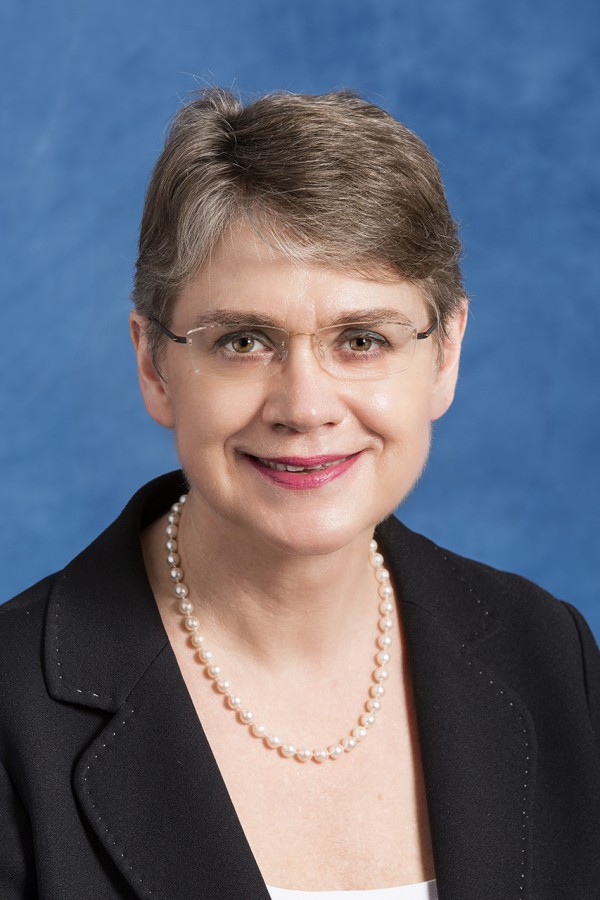MARVEL Distinguished Lecture — Sally Price
The 16th NCCR MARVEL Distinguished Lecture will be given by
Prof. Sally Price (University College London) on Thursday September 6, 2018, 16.15 pm, at EPFL, room MXF1.
If you would like to meet Prof. Price on Thursday September 6, please contact Nathalie Jongen.

Abstract — Crystal Structure Prediction (CSP) methods were developed on the assumption that an organic molecule would crystallize in its most stable crystal structure. Even implementing this approach is a challenge to computational chemistry methods,[1] as shown by the Cambridge Crystallographic Data Centre’s blind tests.[2] Polymorphism adds additional challenges, as this is usually a kinetic phenomenon with metastable polymorphs being unable to transform to the more stable structure in the solid state. CSP is being developed as an aid to polymorph screening [3] through calculating the crystal energy landscape, the set of crystal structures that are thermodynamically plausible as polymorphs. However, the crystal energy landscape usually includes more crystal structures than known polymorphs, raising the question as to why more polymorphs are not found.[4] This can be due to the approximations in the calculations, particularly the use of lattice energies rather than free energies but also the lack of consideration of kinetics. Sometimes the prediction of a putative polymorph can allow the design of a specific experiment to find it, for example by using an isomorphous crystal of another molecule as a template.[5] More commonly, the crystal energy landscape can rationalize observations of complex crystallization behavior, such as the occurrence of disorder [6].Whilst the crystallization behavior of some molecules is easily predicted, many pharmaceuticals and chiral compounds really challenge our understanding of crystallization and ability to model thermodynamics[7].
1. Price, S. L., Predicting crystal structures of organic compounds. Chemical Society Reviews 2014, 43 (7), 2098-2111.
2. Reilly, A. M.; et 91 al., Report on the sixth blind test of organic crystal structure prediction methods. Acta Crystallographica Section B 2016, 72 (4), 439-459.
3. Price, S. L.; Braun, D. E.; Reutzel-Edens, S. M., Can computed crystal energy landscapes help understand pharmaceutical solids? Chemical Communications 2016, 52, 7065-7077.
4. Price, S. L., Why don't we find more polymorphs? Acta Crystallographica Section B - Structural Crystallography and Crystal Chemistry 2013, 69, 313-328.
5. Srirambhatla, V. K.; Guo, R.; Price, S. L.; Florence, A. J., Isomorphous template induced crystallisation: a robust method for the targeted crystallisation of computationally predicted metastable polymorphs. Chemical Communications 2016, 52, 7384-7386.
6. Price, L. S.; McMahon, J. A.; Lingireddy, S. R.; Lau, S. F.; Diseroad, B. A.; Price, S. L.; Reutzel-Edens, S. M., A molecular picture of the problems in ensuring structural purity of tazofelone. Journal of Molecular Structure 2014, 1078, 26-42.
7. Buchholz, H. K.; Hylton, R. K.; Brandenburg, J. G.; Seidel-Morgenstern, A.; Lorenz, H.; Stein, M.; Price, S. L., Thermochemistry of Racemic and Enantiopure Organic Crystals for Predicting Enantiomer Separation. Crystal Growth & Design 2017, 17 (9), 4676-4686.
About the speaker — Sally, officially Sarah, Price trained as a theoretical chemist at the University of Cambridge, specialising in deriving models of the forces between molecules from their wavefunctions. She worked at the Universities of Chicago and Cambridge, before becoming a lecturer at UCL (University College London), where she is now a Professor specialising in Computational Chemistry.
In developing the theory and computer codes to model the organic solid state, she has collaborated widely with experimental solid state chemists, pharmaceutical scientists, theoretical physicists and computational scientists, including leading the Basic Technology Project “Control and Prediction of the Organic Solid State”. She was awarded he RSC Interdisciplinary Prize in 2015 and elected to the Fellowship of the Royal Society in 2017 in recognition of the value of this collaborative work that has, and continues to, reveal the complexities of organic crystallisation.
Sally has written over 200 scientific publications, mainly in Chemistry journals but also in leading Pharmaceutical Science, Crystallography Molecular Biology and Physics journals. Those arising from the CPOSS work which form the basis of this lecture are on the website www.cposs.org.uk. Many of these are multi-disciplinary arising from stimulating work with a large number of PhD students, PDRAs, and academic and industrial scientists from many disciplines.
Low-volume newsletters, targeted to the scientific and industrial communities.
Subscribe to our newsletter